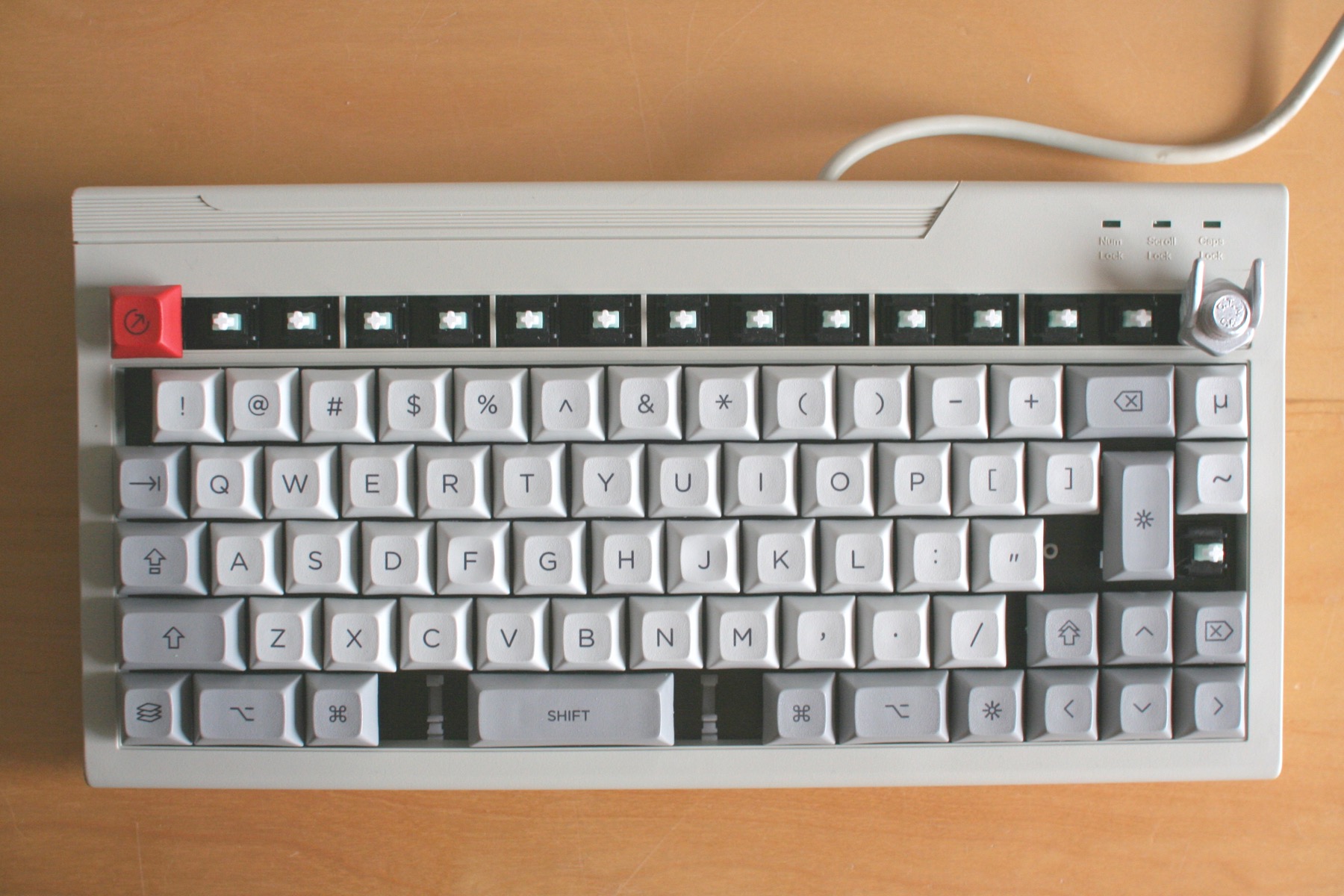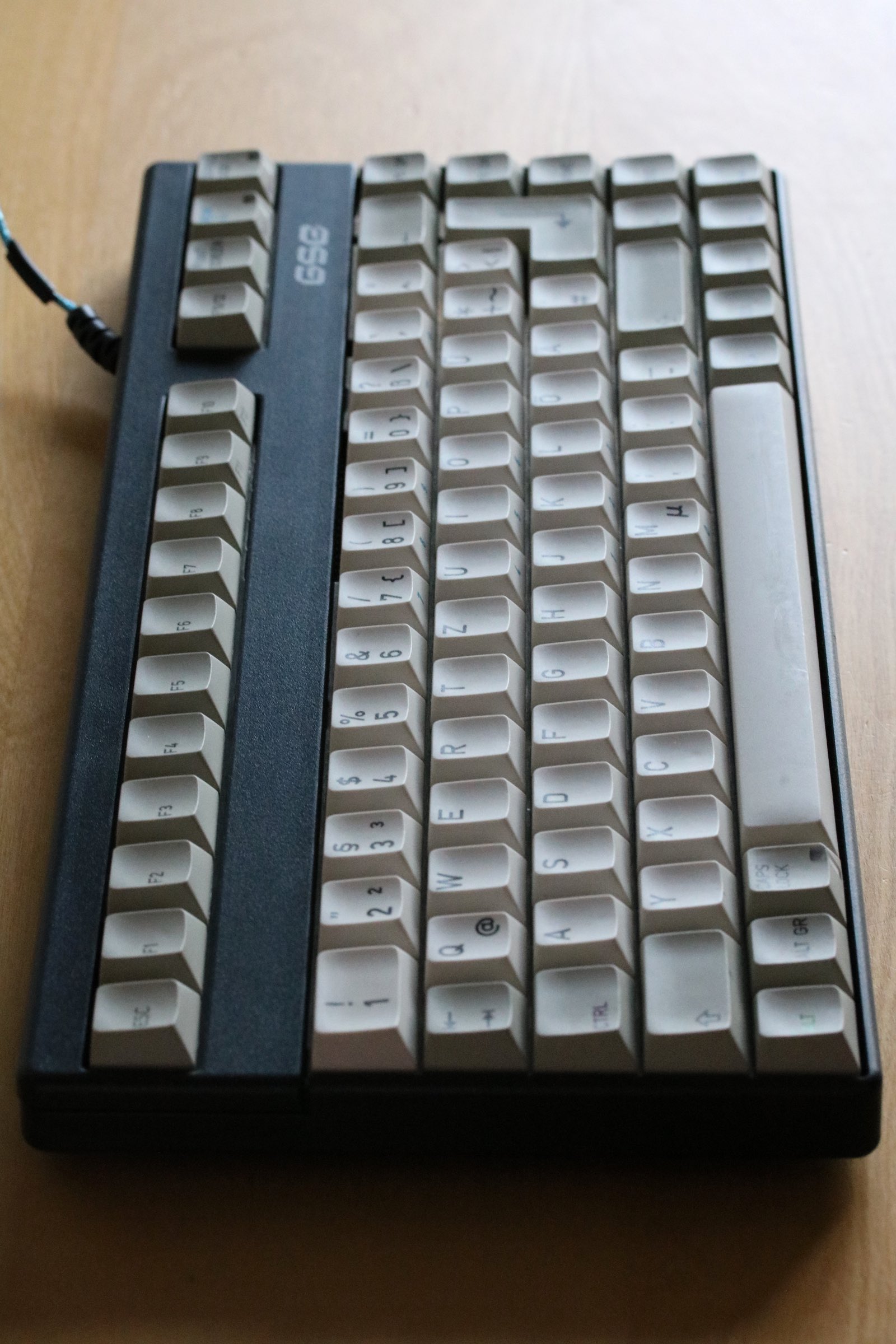Page 21 of 30
Posted: 16 Feb 2016, 22:59
by Halvar
... and yes, the M-122 is supported, I'm using the converter with mine, too. The default key mapping on the M-122 is probably not what you want though, but you can change that later whenever you want. Read the manual in Soarer's zip file for how to do that.
You could also buy a ready-made one if you don't want to solder:
http://www.ebay.com/itm/NEW-RJ45-to-USB ... SwF1dUSZVm
Posted: 16 Feb 2016, 23:09
by Phenix
soldering stuff is available. Teensy/Pro Micro and wire is there. I just don't know which adapter I have to get.
for the M 122key I guess this one?
http://www.bestbuy.com/site/searchpage. ... +connector
or is it possible withouth something like teensy/pro micro? would be cheaper
Posted: 16 Feb 2016, 23:36
by Halvar
The connector on the keyboard is the same as on an network cable (RJ45 8p). So if you want to build an external adapter in a box this would be the right connector:
https://www.conrad.de/de/rj45-einbaubuc ... 10832.html
You need an active converter with a microcontroller, yes. The Pro Micro is reasonably cheap, especially if you buy from China. The Teensy is easier to program and more reliable, but also more expensive.
http://www.ebay.de/itm/LEONARDO-PRO-MIK ... SwHQ9WXaRa
Posted: 17 Feb 2016, 00:12
by Phenix
Ok, thank you very much.
Just out of interested - wheres the teensy located in the cable you've posted above?
How would I make it work with lets say an Model F (also on my to-get list)
Ive saw it somewhere with a switch on top to select between I remember 3-4 different ports. (sure its going to be more expensive

)
Posted: 17 Feb 2016, 00:32
by Muirium
I think Orihalcon is using the ATmega chip from the Teensy, without the rest of the breakout board. Or otherwise he's thinking too small at monetising the amazing spacetime compressor he's invented!
Whatever tricks he's up to, those are nice converters. I think they're well worth the price in saved time and final finesse.
I made and use a Soarer box with multiple ports that supports many of my keyboards. But I wouldn't advise it. Teensies are cheap, Pro Micros even more so, and with one chip per board you don't have to keep reprogramming the box every time you switch keyboards!
Posted: 17 Feb 2016, 00:51
by Phenix
So basically I could follow this tutorial (for multiport)?
Why do I have to reprogram each time I switch board?
Why is he using 2x Teensys?
https://geekhack.org/index.php?topic=58941.0
Posted: 17 Feb 2016, 01:30
by Halvar
You only need to reprogram if you want a different key mapping on the other board. Mu loves compact 60% boards with customized layouts, I guess that's what he might be referring to. I almost never reprogram my Soarer converter, but I use mostly boards with more or less standard PC layouts. Some are tenkeyless, some are winkeyless, some are ANSI vs ISO layout, some have a bigass return key, but these are not differences that force you to reprogram. If you're using a compact board with some strange key rearragements that you don't like, you're more likely to want to define an individual mapping for that, and then it makes sense to build a dedicated converter just for that board.
.
Posted: 17 Feb 2016, 01:41
by Muirium
Yeah, I use my Soarer box with oddball little boards like this:
 wiki/Monterey_K110#SMK_switches
wiki/Monterey_K110#SMK_switches
And this:
 wiki/Marquardt_Mini
wiki/Marquardt_Mini
They need extensive remapping (and layers and macros!) to really fly. I'm still trying to master the Marquardt, which has some real idiosyncrasies! Soarer's converter is the only thing capable of the magic I require. Dumb USB converters couldn't handle my extensive sets of rules.
Halvar's a PC guy, and mostly into fullsize, so he could probably get away with something simpler. I'm a Mac guy into exotic compact boards (as well as my more regular IBMs) so I use Soarer's features at depth!
Posted: 17 Feb 2016, 11:38
by Phenix
Ok. Can please someone say me how I would have to solder a second/third port to the Teensy? or do I have to solder 3x ground to the ground in the Teensy?(1x for each port
=sorry for the questions. Im really new to soldering
Posted: 17 Feb 2016, 11:52
by Muirium
I used a rotary switch. That isolates the multiple boards from each other. Hooking things up directly is a recipe for fried Teensy!
If you're new, try a simple job first. One Teensy: one keyboard. Multiple stuff is significantly more complex. Making things, step by step, is the best way to learn. You'll see.
Posted: 17 Feb 2016, 11:57
by Phenix
Posted: 17 Feb 2016, 12:00
by Muirium
Nope. You need 4 poles. That one has just 1. And you need as many positions as you plan ports.
It's at least 5x the work to hook one of those up. Don't do it as your first time job. You'll burn a Teensy and maybe ruin a keyboard or two in the process! There's a lot to get wrong.
Posted: 17 Feb 2016, 12:07
by Phenix
Ok. In this case I focus on. One port and make such a box if im better/know more
thanks for ther help
Posted: 17 Feb 2016, 12:11
by Halvar
I agree with Mu. If you're asking if this is the right switch, then do yourself a favour and start simple. Use a little longer wires than you would need. Once you got it to work for one keyboard, with programming and all, you can still decide to cut the wires in the middle and put a switch in between.
Posted: 17 Feb 2016, 13:46
by Muirium
Good stuff. Having a switch is cool, but I still often need to upload new configs to my Soarer Box when I flip the switch between keyboards, for the oddball layout reasons I pictured above, and RJ45 terminal keyboards too. Soarer's Converter needs reset to run its recognition logic. And a whole lot of keyboards are impossible to tell apart by their IDs, unfortunately…
One board: one Teensy. That's the way to go.
Posted: 17 Feb 2016, 20:47
by Rimrul
Muirium wrote: I used a rotary switch. That isolates the multiple boards from each other. Hooking things up directly is a recipe for fried Teensy!
If you're new, try a simple job first. One Teensy: one keyboard. Multiple stuff is significantly more complex. Making things, step by step, is the best way to learn. You'll see.
Solid advice, but I have a question about future exctension of my emerging converter: How does one properly isolate the ports from each other? Rotary switch connecting VCC to four transistors and one pulldown per port that disconnect the ports that aren't activated? Do I also need to reset the teensy on rotation of the switch? IIRC that could be done with some edge detection (basicaly half a flip flop) and and OR-Gate. Did I miss something obvious? I'm sorry if this is a pure mess, it's been a few days since I last did some electronics related stuff.
Does soarers converter need to be told wether a DIN plug is attached to an AT or XT keyboard?
Posted: 21 Feb 2016, 21:33
by tentator
I would really discourage to do "hotplug" on PS2 devices.. the PS2 was not conceived for doing hotplugging like USB was, so to say.. I wouldn't actually even do it with rotary switches to be honest.. frying risk is high

the best would be that the usb gets unplugged or the teensy is hold in reset while rotating to move to next device..
if you use XT or AT instead I'm not sure but would also think that the protocol was never intended to be hotplugged..
it's the same reason why those keyboards were not recognized if plugged after system start.. a reboot and bios cycle was needed on the original systems..
but maybe some ingenious rotary switch which does also reset on the teensy is somehow doable and could make this work..
tent:wq
PS: I'm fiddling a littel bit with the pro-micro now.. but having troubles in programming it with FLIP and having the USB driver for it installed to flash.. does somebody have a good reference/guide to do that under windows? thnx!
Posted: 21 Feb 2016, 21:36
by Laser
tentator wrote:
PS: I'm fiddling a littel bit with the pro-micro now.. but having troubles in programming it with FLIP and having the USB driver for it installed to flash.. does somebody have a good reference/guide to do that under windows? thnx!
Not Flip, but maybe useful:
workshop-f7/ibm-model-f-bigfoot-with-ar ... t9418.html
Posted: 21 Feb 2016, 23:19
by tentator
thank you very much! my problem was that I didn't realize that "To see the COM port, keep the device's driver window open - the COM line in the list will also display its port number" while resetting it by putting pin RST to GND, BUT I HAD TO INSTALL BEFORE THE ARDUINO SOFTWARE! Otherwise I kept not showing up the COM port in the device manager...

So let's see if I now manage to proceed in my PS2-trackpoint-mouse to USB adventure..

tent:wq
PS: from what I could see I suppoe that the Soarer's converter is not handling any PS2 mouse, right? only keyboards..
Posted: 21 Feb 2016, 23:31
by Laser
tentator wrote:
PS: from what I could see I suppoe that the Soarer's converter is not handling any PS2 mouse, right? only keyboards..
Mice? I have *no* idea.
Posted: 22 Feb 2016, 00:04
by tentator
let's say I have something like an M13.. so two PS2: one for keyboard and one for mouse of the trackpoint.. is that mice only possible with tmk?
Posted: 22 Feb 2016, 00:32
by scottc
I made a converter tonight, but when I plug it in the three LEDs on the keyboards just flash, then don't register keypresses. Happens with all AT keyboards I've tried. Don't have any XT to test. Anyone seen this before?
Posted: 22 Feb 2016, 00:51
by Muirium
You know how a smart tech phone support person will ask someone to "check that the power cable is connected"? I suggest checking that level of stuff! All three lights is the kind of thing to happen when you've got something like clock and data confused.
Posted: 22 Feb 2016, 07:30
by Halvar
What does hid_listen tell you when you plug in the usb connector?
Posted: 22 Feb 2016, 22:20
by scottc
Everything seems to be hooked up alright! I took care to flip the orientation of the pins vs. the diagram and all that. hid_listen says:
Listening:
wEE
remaining: FFFC
Keyboard ID: 0000
Code Set: 1
Then radio silence.
Edit: I must've been drinking last night. I think I was looking at the wrong DIN socket diagram. AHHHHHHHHHHHH. Let's see what I can do.
Posted: 22 Feb 2016, 22:26
by Muirium
That looks like XT to me. Something's funny.
Edit: Ahhh. Thought so! You're just hooking up an AT or PS/2 socket, right?
Posted: 22 Feb 2016, 22:29
by scottc
Yeah, just an AT socket. I'm an idiot, I looked at Soarer's docs instead of
the facking guide that I wrote myself. I wired up the IBM terminal pinout. Durr!
Posted: 22 Feb 2016, 22:30
by Muirium
Could you please check that the mains cable is
safely inserted into the computer?
Posted: 22 Feb 2016, 22:40
by scottc
It obviously works just fine now, I just had to humiliate myself first. That's how the electrons work! They need a bit of humour to get moving. Of course, not until I accidentally swapped the clock and data pins. I was met by a chorus of R05 R05 R05 R05 R05 on every key press. Thanks, brain.
Posted: 07 Mar 2016, 13:46
by gcardinal
Great firmware! is it possible to change hid codes or in someway modify / add new ones?..
I have it running with TDV 5000 and Arduino Leonardo

